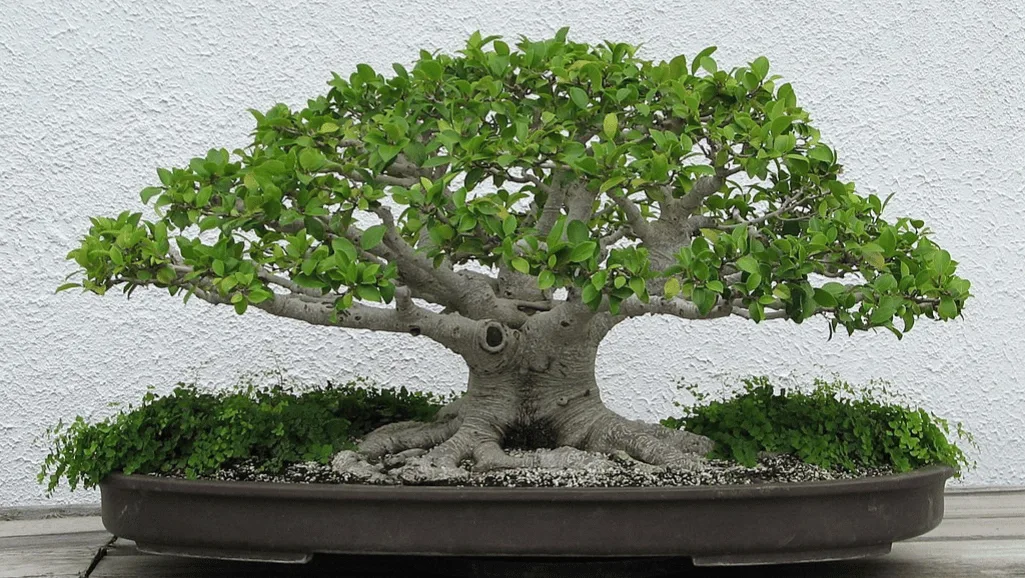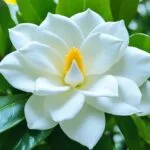
Beautiful flowers gardenia Plants For Your homes

Make your indoor garden thrive with the stunning Chinese banyan, also known as Ficus microcarpa. This air purifying plant combines beauty with simplicity, bringing the charm of bonsai art to your space. It’s an easy care houseplant that improves air quality indoors. It’s perfect for both experienced and new gardeners, making sure your Chinese Banyan thrives.
The Chinese banyan, also known as Ficus microcarpa, stands out among indoor bonsai trees. It’s found in many places from China to Australia. This tree is known for its strong look and flexibility. To take good care of this tree, we need to understand its specific needs.
The Ficus microcarpa needs certain conditions to thrive, similar to its tropical home. It’s crucial to know these needs for successful care. Taking good care means keeping humidity steady, providing enough light, and managing soil moisture well.
The Ficus microcarpa and the Ficus retusa are related and share some care tips. Both like soil that drains well, need regular food, and should be protected from extreme temperatures. This makes them good choices as indoor bonsai trees.
Choosing to grow the Chinese banyan inside or outside depends on the climate and the tree’s flexibility. Indoors, it needs controlled conditions to match its natural climate and protect it from harsh temperatures. Outside, it can grow naturally but needs careful watching to avoid stress during bad weather.
| Location | Growth Form | Cultivation Notes |
|---|---|---|
| Urban Landscapes (USA, Australia, Southern Europe) | Up to 30 meters tall; wide canopy | Popular for shade; tolerates urban pollution and pruning |
| Fuzhou, China | Oldest known specimen; Canopy spread of 1,330 square meters | Crucial part of cultural heritage; Supports with concrete columns |
| Tropical Asia & Caroline Islands | Typically 10-15 meters in native settings | Requires high humidity and consistent temperatures |
Caring for the Chinese banyan might seem hard, but with the right knowledge and setup, it’s rewarding. It brings a peaceful touch to any space, whether it’s a garden or a living room corner.
Cultivating a thriving Chinese banyan starts with knowing its main needs, like the importance of light. As a sought-after indoor bonsai tree, getting the right amount of light is key to its growth and health.
The Chinese banyan loves bright, indirect light, especially when it’s growing fast in summer. It’s important to change the light levels with the seasons to match its natural environment. Place your bonsai near a window to get soft morning sun and shade in the hot afternoon.
It’s crucial to shield your indoor bonsai tree from too much sunlight to avoid leaf burn and keep its leaves healthy. Use sheer curtains or move the bonsai to a spot with less sun during the peak hours. This helps keep your ornamental plant looking lush and healthy.
Turn your Chinese banyan regularly to make sure all sides get enough light. This helps it grow evenly and stops it from leaning towards the sun. The right spot not only helps it grow better but also makes your bonsai look more beautiful.
For more tips on keeping a healthy indoor bonsai tree, check out the details on proper lighting.
| Aspect | Requirement |
|---|---|
| Light Conditions | Bright, indirect sunlight |
| Seasonal Light Adjustment | More shade in summer afternoons |
| Window Orientation | East or north-facing windows |
Learning how to water your Chinese banyan is key to keeping it healthy. This type of easy care houseplant, known as Ficus microcarpa, needs the right amount of moisture. It’s important to make sure the soil is moist but not too wet to prevent root rot.
Use a special soil mix for bonsai, like a mix of akadama, pumice, and lava rock in equal parts. This mix helps the soil hold moisture but also drains well. Check the soil every day to see if it’s dry. Water when it feels a bit dry, to avoid over- or under-watering.
It’s best to use rainwater for your Ficus microcarpa. Rainwater doesn’t have the chemicals found in tap water. This helps keep your bonsai healthy and supports its natural environment. Also, watering like it rains can help your bonsai stay healthy.
Keeping the right humidity around your bonsai is also key. You can do this with humidity trays. These trays hold extra water and keep the air around your tree moist, especially in dry months or places.
Let’s look at why these steps are so important:
| Aspect | Importance |
|---|---|
| Soil Composition | Promotes proper drainage and aeration, preventing root diseases. |
| Watering Frequency | Keeps the plant hydrated without causing water stress or root rot. |
| Use of Rainwater | Avoids chemical buildup which can negatively impact the plant’s health. |
| Humidity Management | Maintains necessary moisture levels around the foliage, mimicking the Ficus microcarpa’s natural humid environment. |
By following these steps, your Chinese banyan will not just live but flourish. It will look beautiful and last longer as a beloved easy care houseplant.
For those who love the Chinese banyan as an indoor bonsai tree, knowing how to manage the microclimate is key. This tree does best in temperatures between 60-80°F (15-26°C). It also likes moderate to high humidity. These conditions help the tree stay healthy and work well as an air purifying plant.
To make a good home for the Chinese banyan, you need to adjust the temperature and humidity. You can use humidity trays with water and pebbles under the pot to add moisture. Or, put the indoor bonsai tree in humid spots like kitchens or bathrooms.
But, be careful not to let the tree face big temperature changes. Don’t put your Chinese banyan near air conditioners, heaters, or drafty windows. These can stress the plant out. Instead, choose a spot with steady air for the bonsai to thrive.
Looking after an indoor bonsai tree, especially the Chinese banyan, means paying attention to every detail. This careful care makes for a beautiful bonsai and a strong air purifying plant. It also makes your home better. For more on how trees help in cities, check out how trees in Hong Kong improve the climate here.
Feeding your Chinese banyan, a beloved ornamental plant, the right nutrients is crucial for its health. It’s important to know the best fertilizers, when to use them, and how to spot nutrient imbalances. This knowledge helps keep your easy care houseplant looking great.
The ficus family, which includes the Chinese banyan, needs specific nutrients for the best growth. With over 800 species, each has its own needs. For example, bonsai Chinese banyans do well with a balanced NPK ratio in spring and summer, and low-nitrogen mixes in autumn. This ensures they get the right amount of Nitrogen, Phosphorus, and Potassium at different times.
Using a fertilizing schedule is key for your Chinese banyan. Start in spring and keep going through autumn. In the growing season, use a fertilizer high in Nitrogen every two weeks for strong growth. Switch to a balanced fertilizer in summer to keep it healthy, and a low Nitrogen one in fall to get it ready for sleep.
This careful timing not only keeps your plant healthy but also makes it look great. It’s why this easy care houseplant is so popular.
Watch your Chinese banyan for signs it’s not getting enough nutrients or getting too much. Yellow leaves can mean it lacks Nitrogen or Iron, while brown or droopy leaves might mean too much fertilizer. Adjust how often and how much you fertilize based on these signs and your bonsai’s stage of growth.
Using organic options like Biogold is good for the Chinese banyan. It gives nutrients slowly, which is good for the small roots of bonsai trees. Checking on your plant often and adjusting how you fertilize keeps it looking good in your home or garden.
| Season | Fertilizer Type | NPK Ratio | Frequency |
|---|---|---|---|
| Spring | High Nitrogen | 10:6:6 | Every two weeks |
| Summer | Balanced | 6:6:6 | Every two weeks |
| Autumn | Low Nitrogen | 3:6:6 | Every four weeks |
Pruning your Ficus microcarpa, also known as the Chinese banyan, is key for its looks and health. It’s important to know how to do it right to help the tree grow well and keep its shape. This task needs precision and a good understanding of the plant’s needs.
Pruning the Chinese banyan regularly helps control its size and shape, which is vital in indoor spaces. It affects the tree’s look, strength, and branch placement. This, in turn, impacts its health and lifespan.
For best results, prune when new shoots start to harden, usually after 6 to 8 leaves appear. Cutting back to 1 to 3 leaves encourages smaller, fuller leaves. This makes the Ficus microcarpa look more lush. Light defoliation in spring also helps create a balanced foliage canopy.
Choosing the right tools is crucial for precise cuts and your bonsai’s health. Use sterilized, sharp scissors or clippers for clean cuts that heal fast. This prevents disease and pests. Keep these tools only for bonsai to avoid contamination.
To keep the Ficus microcarpa looking great, prune regularly and carefully. Remove branches that clutter or disturb the tree’s balance. This keeps the bonsai’s artistic look and ensures it stays healthy and balanced.
For more tips on caring for your Chinese banyan, check out bonsai care websites. They offer detailed guides and advice on keeping these beautiful trees thriving.
| Aspect | Recommendation |
|---|---|
| Pruning Frequency | Regularly, when new shoots have 6-8 leaves |
| Light Requirement | Bright, indirect light |
| Watering Schedule | Evenly moist in growing season; sparingly in winter |
| Root Care during Repotting | Prune no more than 1/3 of the root system |
| Fertilization Frequency | Every two weeks in spring to autumn; less frequent in winter |
Using these pruning and care tips will help your Ficus microcarpa grow strong and look great as an indoor bonsai. It will show off nature’s beauty and resilience.
Whether you’re growing a Ficus microcarpa indoors or in your garden, the Chinese banyan faces threats from pests and diseases. It’s important to watch for these threats and act fast to keep your tree healthy.
Pests like aphids, scales, and spider mites can harm your Ficus microcarpa. Check your tree often to spot these pests early. Look for small marks or changes in leaves that could mean an infestation.
It’s best to use non-chemical ways to treat these problems to protect your plant and the environment. Natural options like neem oil and insecticidal soap work well. Use these treatments when it’s cooler to avoid harming the leaves and help the plant absorb them better.
Here’s a list of natural ways to keep your Chinese banyan safe from pests:
| Pest | Symptoms | Natural Treatment |
|---|---|---|
| Aphids | Yellowing, distorted leaves, honeydew | Neem oil, strong water jet |
| Scales | Bumps on bark/leaves, leaf drop | Insecticidal soap, horticultural oil |
| Spider Mites | Webbing, dusty leaves | High humidity environment, organic miticides |
Preventing problems is better than fixing them. Keep your Chinese banyan healthy with the right light, water, and food. This will make it stronger against pests and diseases. Clean around your tree often, watch for any signs of trouble, and get help from an arborist if you see anything strange.
Propagating the Chinese banyan is both challenging and rewarding. This air purifying plant is easy to care for. It grows tall, with wide roots and branches. Understanding how to grow it is key.
This tree can get really big, up to 100 feet tall. In Calcutta, India, one tree covers acres. Propagating it needs careful planning for indoor or outdoor settings in zones 10-12.
Choosing between seeding or softwood cuttings is important. Seeds need to dry on the plant and require special wasps for pollination. Cuttings are better for indoor plants and are more predictable.
Handling cuttings is tricky because some parts of the plant can irritate you.
Banyans like well-drained, moist soil. They should be repotted every two to three years. This keeps them healthy.
Remember, these trees can get huge, sheltering thousands of people. They need deep, wide soil to grow strong roots. These roots help hold the soil and prevent erosion.
Growing banyans can be tricky. Problems like poor root growth or bad conditions can slow them down. Choosing the right spot is crucial to avoid problems with buildings or foundations.
Watch out for too much water and make sure they get enough light. This keeps them healthy. Understanding their cultural and religious importance helps in their care. Some banyans have lived for centuries, showing their value to nature and culture.




